Key points
Elizabeth I was a Tudor queen who ruled England from 1558 - 1603.
She was the daughter of Henry VIII, and the final Tudor monarch.
Her reign has often been described as a ‘Golden Age’ of culture, wealth and exploration. More recently, some historians have questioned the extent to which we should call Elizabeth’s reign a ‘Golden Age’. This guide will look at what has driven these historians to ask these questions, and explore how glorious and stable Elizabeth’s reign truly was.
Video about Elizabethan rule
Narrator:
Elizabeth I reigned from 1558 until 1603. Her reign is commonly referred to as a golden age. By looking at three aspects of her reign, we can investigate how golden it actually was.
Elizabeth's leadership: Elizabeth is often viewed as a strong, powerful female ruler in a world run by men. This view is supported by her refusal to marry the men her adviser suggested, her tight control over nobles and Parliament and the lavish lifestyle she led at court. But her refusal to marry raised the question of who would reign next, leading to many troublesome plots from others who had claims to the throne.
And for many people, life during her reign was not that golden. A growing population meant there was more demand for food and goods, so the cost of living rose and wages fell as there were more people available to do the work. At the same time, tax was increased to pay for Elizabeth's war with Spain and to defeat the many rebellions she faced.
All of this meant poverty levels rose and social problems such as crime and homelessness increased. It wasn't until the end of her reign that Elizabeth introduced laws to help tackle these problems.
Religious tolerance: Elizabeth enacted the Middle Way, a religious settlement that allowed different types of Christianity to practise their faith privately, as long as they recognised her role as Head of the Church. But in reality, Catholics were unhappy that the state religion was now Protestant, and Protestants were unhappy about the compromises allowed to Catholics. And Elizabeth persecuted Catholic priests and nobles who crossed her.
The defeat of the Spanish Armada in 1588: Catholic Spain, with the support of the Pope, planned to overthrow Elizabeth to stop the spread of Protestantism in England. The English Navy defeated the Spanish Armada and more than a third of the Spanish ships failed to return home.
Elizabeth often gets credit for the victory, but in reality it was a mixture of skilled English commanders like Sir Francis Drake and their more modern, lighter boats, inexperienced Spanish commanders and bad weather that prevented the Spanish invasion.
Elizabeth's reign was undoubtedly a time of great prosperity, influence and success for some, but there were many problems regarding religion, foreign relations and the poverty of working people that raises questions about whether her reign was a golden age for everyone.
Gloriana?
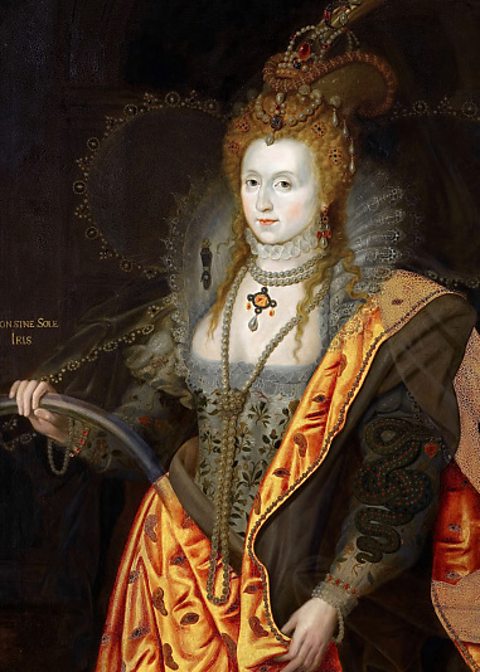
Elizabeth I reigned over England for a long time, from 1558 to 1603. During her reign, Elizabeth came to be known as ‘Gloriana.’ This name suggested that she had brought glory to her kingdom. Elizabeth encouraged this idea, and commissioned portraits, plays and poetry to advance it further.
However, by the end of Elizabeth’s reign, population increases and poor harvests had led to poverty for lots of ordinary people. Rebellions occurred. Though Elizabeth created the Religious Settlement, she faced opposition from both Catholics and Puritans, who were radical Protestants.

What changes took place under Elizabeth's rule?
Under Elizabeth I, England underwent a prolonged period of change. The wealthy grew richer. New grammar schools meant more young men received an education. Architecture and the theatre developed too. England also became increasingly involved in the exploration and colonisation of other parts of the world.
Expansion of the Arts
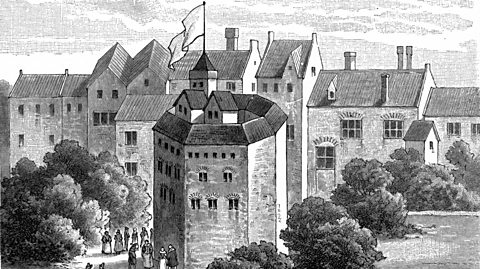
Theatres in England flourished in the Elizabethan period. At the start of Elizabeth’s reign, there were no theatres in England. Instead, people mostly watched plays based on religious stories, which were performed by travelling actors.
From the 1560s, dedicated theatres were built in London. The Red Lion was built in 1567, the Theatre in 1576, the Curtain in 1577, the Rose in 1587, the Swan in 1597 and the Globe in 1599.
A community of actors and writers began to grow. Playwrights such as Christopher Marlowe, Thomas Kyd, Thomas Dekker and William Shakespeare supplied theatres with new and exciting plays. Comedies and tragedies, particularly revenge tragedies, became very popular. Shakespeare wrote at least 37 plays, which are still performed today.
Watching plays became a popular form of entertainment for people at different levels of society. This was reflected in theatre design. In front of the stage, there was a standing area with cheaper tickets, and covered galleries with more expensive seating for those who could afford it.
Though lots of people enjoyed going to watch plays, others were worried about the growing popularity of the theatre:
Puritans feared that plays distracted people from God and took them away from Sunday services.
There was a concern that packed theatres would be magnets for crime and pickpocketing.
It was also feared that theatres could spread diseases like the plague.

Elizabethan society
Elizabethan society was divided into a hierarchy of different groups. It was very rare for people to move up the hierarchy, and people mostly remained within the group that they had been born into.
Expansion of wealth
For certain groups in society, the Elizabethan era was a time of growing wealth and riches:
Land that had been taken from the monasteries under Henry VIII was bought by men who wanted the status of a country landowner.
Profits from the wool trade meant increased wealth for some.
Trading companies supported by the queen were set up, and they were designed to make big profits.
Elizabeth also supported sailors who gained riches by attacking the ships of other countries, such as Spain, and taking the valuable goods on board. Often these goods had been forcibly taken from the Americas, which was being colonised by European powers.
Although it wasn’t until after the Elizabethan era that England became one of the world’s biggest slave trading nations, Elizabeth I did profit from the trade in enslaved people because of her relationship with privateers such as John Hawkins and Francis Drake. Both became involved in the trade as part of their activities at sea. John Hawkins led a raid that violently captured 300 people in West Africa and transported them to Spanish plantations in the Americas. Hawkins swapped the enslaved people for pearls and sugar, making so much money that Elizabeth invested in his future journeys and provided ships, supplies and guns. She also gave him a unique coat of arms, bearing an image of an enslaved African.
Elizabethan houses
In Elizabethan times, the nobility showed off their expanding riches by building new styles of houses. They moved away from the design of earlier Tudor homes, in which every room centred around a communal great hall, and instead built their homes in 'E' and 'H' shapes.
'E’ and ‘H’ shaped homes allowed servants to be housed in separate wings to the family. Chimneys allowed for individual rooms to have their own fireplaces. This meant separate rooms could be created for eating, sleeping and leisure.
In the centre of the ‘E’ or ‘H’ home, long galleries with ornate plasterwork or wood carving allowed indoor exercise on rainy days; they were also places to show off portrait collections.
Large windows were placed in these homes. One example of an Elizabethan stately home is Hardwick Hall, in Derbyshire. Built by Robert Smythson for the Elizabethan noblewoman Bess of Hardwick, it was one of the most luxurious homes in England. Glass was very expensive during the Elizabethan era, and some people used to say that “Hardwick Hall [was] more glass than wall”.
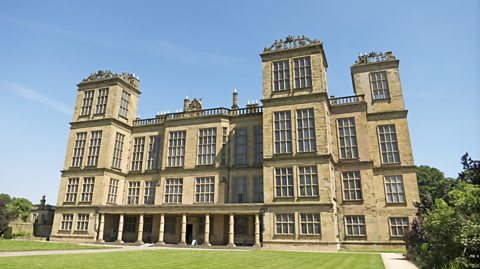
The gentryPeople of high social status just below the nobility in the social hierarchy. and merchantA trader. also built new homes, based on the wealth they had earned through sheep farming or trade. Like the nobility, they filled their homes with luxury goods from around the world. They bought velvet and glasses from Italy, carpets from Turkey and spices from India.
Poverty in Elizabethan England
Video about rural poverty in Elizabethan England
Presenter:
Dotted around the countryside, you'll find small, thatched cottages, some already hundreds of years old. And when you first spot one, don't have any ideas that life in the countryside is pleasant.
The family you'll meet here is very poor indeed. It's not unusual to find as many as seven or eight people living in a house like this. Imagine you've come to stay with one of your ancestors in the 1560s, and you're having to stay here. Well, the thing that will strike you most is that it is dark. Very dark. You can't just turn on a light in a house like this. In fact, it's very unlikely you'll see colours indoors at all. It's just too dark. You'll go to sleep in darkness and you'll wake in darkness.
Inside, you'll find it's very basic, just one room with an earth floor. In the middle, you'll see a fire, permanently lit. But what will really hit you is the thick smoke filling the whole room. To prevent you suffocating, they've made an opening in the roof. And the windows are no more than just holes in the wall.
Because the windows are unglazed, covered only by a shutter, they let in the cold. So they're small, to retain as much heat as possible. Even in the summer months, very little light is going to enter your home. Candles, you might think, are the obvious answer. Today, we just take them for granted. But in Elizabethan times, candles are expensive, and a poor family simply can't afford lots of light.
This family's only possessions are a few pots, some spoons and ladles, a basket, and a bench. You'll find yourself sleeping on the floor, or if you're lucky, on one of their thin straw mattresses.
In this world of darkness, you won't just see differently, you'll listen differently, too. You pay attention to the things you hear, the small sounds of the house. The crackling of the fire. The sighing of a child in the cradle. Raindrops on the roof.
Narrator reading text on screen:
The cold stuck so deep into them their flesh was eaten with vermin and corrupt diseases grew on them.
The significant rise in poverty during the Elizabethan era has caused some historians to question the extent to which her reign was a 'Golden Age'.
Despite the increasing wealth of the merchants, gentry and nobility, many people who were considered the 'Lower Sort'A term used to describe several groups of people who were at the bottom of the social hierarchy during the Elizabethan era, including peasants, farmers, labourers and servants. lived in poverty. During the Tudor period, the population of England had doubled from around 2 million to roughly 4 million. This put increasing pressure on resources.
Towards the end of Elizabeth’s reign, harvests were frequently poor. Jobs were hard to find and food prices rose rapidly. Starvation was a very real fear for the ordinary people of Elizabethan England.
These pressures meant that homelessness increased, and people were forced to migrateWhen a person moves from living in one country or area to living in another country or area. across England in search of work. The gentry, nobility and Elizabeth’s government became increasingly concerned that these people might turn to crime.
In Elizabethan society, there was not much sympathy for the poor. The Elizabethans classified the poor into the ‘deserving’ and ‘undeserving’ poor:
The deserving poor might need support as a result of injury, illness, disability or old age.
The undeserving poor were those who were able-bodied but couldn’t find work, women who became pregnant outside of marriage or those thought to have wasted their money.
Legal attempts to deal with poverty
In 1572, a law designed to deal with people who didn't have a fixed home was passed. People in this situation were known as ‘vagabonds’ or ‘vagrants’, which are terms we don't use today. The law introduced a compulsory taxesMoney charged to the people of the kingdom by the monarch to fund various expenses, including raising money for wars and defence. that was collected locally and then distributed to people in need. However, the law also allowed local men who were homeless to be branded, or whipped. If they remained poor and homeless, they could eventually be sent to prison, or even executed.
Poor Laws were introduced in 1598 and 1601. These laws were an attempt to deal with rising poverty in Elizabethan society. Some local laws had already been introduced, but these Poor Laws were the first to apply on a national scale. One of the most major changes was that a new role was introduced, known as an Overseer of the Poor. In England, every parish would elect two Overseers of the Poor.
What did an Overseer of the Poor do?
An Overseer of the Poor could:
Collect a tax known as the 'poor rate', which was then distributed to the local deserving poor.
Find work for able-bodied people.
Take children away from their parents if the family were living in poverty.
Religious conflict
Following the Catholic reign of her sister, Mary I, Elizabeth wanted a middle way between the Protestantism A form of Christianity that originated in the early 16th century, after a German priest, Martin Luther, published a long list of criticisms of the Catholic Church. of her brother, Edward, and the CatholicismThe traditions and beliefs of the Catholic Church, led by the Pope in Rome. of her sister, Mary. She used laws passed by ParliamentElected members of the House of Commons, and the House of Lords, who helped the King to pass laws. in an attempt to make the Church of England moderately Protestant. This has become known as the Elizabethan Religious Settlement.
Elizabeth wanted to keep as many people happy as possible whilst remaining true to her moderate Protestant faith. Elizabeth maintained some aspects of Catholic Church decoration and kept some ambiguous wording in her prayer book to try and keep both Protestants and Catholics happy. At the beginning of her reign, Elizabeth was tolerant of Catholics.
However, the settlement failed to keep everybody happy. Strict Protestants, who would become known as PuritanStrict, radical Protestants who rejected anything that could not be found in the Bible, including music and images in churches. , vocally objected to Elizabeth’s settlement. They argued that it had not gone far enough. They wanted anything even slightly Catholic removed from the Church of England. Some even wanted the power to run their own churches in their own way, without Elizabeth as the head.
In addition, a small minority of Catholics plotted against Elizabeth. Four plots attempted to get rid of Queen Elizabeth and replace her with her Catholic cousin, Mary Queen of Scots.
In reaction to these plots, Elizabeth punished the English Catholic community. Large fines were placed on the heads of Catholic households for not attending church. Catholics were never allowed to be more than five miles from their homes without a licence.
Mary Queen of Scots
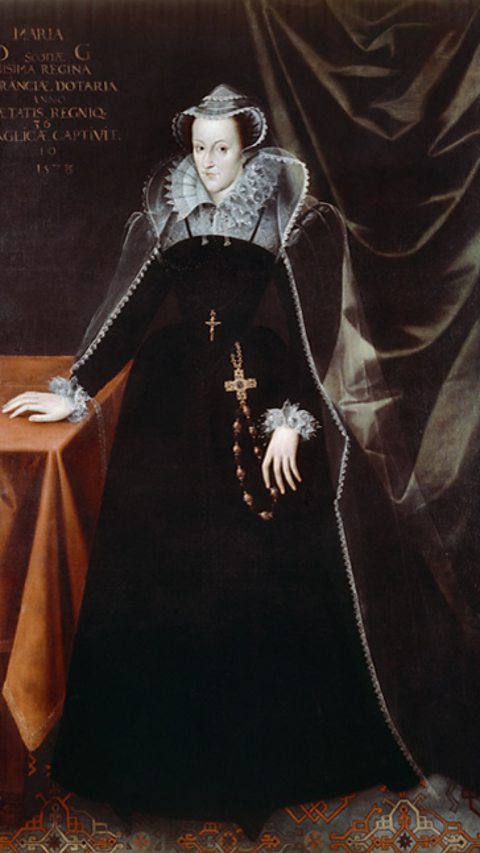
Mary Queen of Scots was Elizabeth’s cousin. Mary was Catholic and had been the queen of Scotland since her father’s death. She fled to France to avoid kidnap by Henry VIII, who had wanted to force her into marriage with his son, Edward. In 1558, Mary married the heir to the French throne, Francis. She was 16 years old. Mary and Francis became king and queen of France in 1559. Francis died, possibly as a result of an ear infection, in 1560. Mary returned to Scotland.
During her time in France, Mary had left her mother, Mary of Guise, in charge of Scotland. When she returned following Francis' death, she found that it was dominated by Protestant noblemen. One especially influential figure was John Knox, a Protestant reformer who did not approve of female monarchs. Many men during the Tudor period believed that women were inferior to men. Knox also hated Mary because she was Catholic. He wrote a book that attacked female monarchs, which was called The First Blast of the Trumpet against the Monstrous Regiment (Rule) of Women.
After eight years in Scotland Mary was forced out by the Protestant nobility. She left a young son, James, behind. He was made king at only two years old. Mary rode to England, as she believed Elizabeth would help her.
However, when Mary arrived in England, many of Elizabeth’s advisors saw Mary as a threat. William Cecil, for example, saw Mary’s Catholicism as a threat to Elizabeth’s Protestant rule. They were right. Within a year of Mary’s arrival, Catholic men in the north of England rose up in an attempt to place Mary on the throne, and reinstate Catholicism in England.
Similar plots to replace Elizabeth with Mary followed. These escalated in 1570, when the Pope announced that Elizabeth was an illegitimate heretic who could therefore be assassinated. Elizabeth did not know what to do with Mary and kept her imprisoned for nineteen years.
In 1587, Elizabeth signed a death warrant for Mary. She had supposedly been caught writing coded letters encouraging a man named Anthony Babbington to kill Elizabeth, and free Mary. Elizabeth claimed to the world that she had had no knowledge of the execution. Although she had signed Mary's death warrant, she had not intended to have her cousin executed straightaway; her privy councillors acted before she could give her final agreement. In the aftermath of Mary's death, leaders of Catholic countries in Europe were appalled. Mary’s death contributed to Philip II of Spain’s decision to attempt to invade England in 1588.

The Spanish Armada

England and Spain had initially been allies. King Philip II of Spain had been married to Elizabeth I’s sister, Mary, and England and Spain had been allies during war with France. When Elizabeth came to the throne, she tried to remain friendly with Spain. Philip had remained friendly too; he had hoped that in time Elizabeth might come round to becoming a Catholic.
Tensions began to rise between the two nations when it became clear that Elizabeth was steadfast in her Protestantism. Philip was particularly angered by the death of his Catholic ally, Mary Queen of Scots, and Elizabeth’s assistance for Protestant rebels in the Netherlands who were seeking to overthrow Philip’s control. Philip had also been aggravated by the behaviour of Elizabeth’s privateersPirates who sailed to raid foreign ships with the permission of their monarch from around 1560-1856., such as Sir Francis Drake and his cousin, Sir John Hawkins, who made money by robbing and raiding Spanish settlements and ships in the Americas.
In the summer of 1588, Philip attempted to launch an invasion of England. This was one of the largest attempted invasions England had seen. 130 Spanish ships were sent to invade.
There were a couple of main factors in the defeat of the Armada:
Elizabeth's naval commanders were highly skilled.
Strong storms scattered, and sank, many of the Spanish ships.
The English ships were designed for battle. Many of the Spanish ships were not warships, and were generally used for transporting soldiers and supplies.
Elizabeth used the defeat of the Armada to create propagandaPutting forward biased information to persuade people to believe a particular point of view., which was intended to increase support for her rule. Medals commemorating the event read, ‘God blew and they scattered’. It was a reference to the storms dispersing the Spanish ships.
Despite the defeat of the Armada, wars against Spain continued until the end of Elizabeth’s reign. They drained Elizabeth’s resources and caused tensions between her and Parliament. Many English soldiers returned from battle injured and unpaid, which increased poverty. These failings might lead historians to conclude that her reign was not completely successful.

A Golden Age?
The reign of Elizabeth I led to significant changes in culture and society:
Theatre flourished, with many new plays written and performed. This gave people the opportunity to enjoy going to the theatre, though others were less pleased about this development. They worried about the crowds at the theatre possibly increasing the spread of disease, that pickpockets might steal from the crowds and that people would become distracted from religion.
Many people became wealthier during Elizabeth's reign, and were able to build beautiful houses with many different rooms. This expansion of wealth did not apply to everyone, however, with poverty growing considerably during the Elizabethan era. Homelessness increased, and people who could not afford to pay their taxes were punished severely by the law, though Elizabeth did introduce some laws to try to help those who were struggling. Furthermore, this increasing wealth was partly gained from England's early involvement in the trade of enslaved African people.
Though Elizabeth attempted to introduce a more moderate approach to religion, some strict Protestants were very unhappy about the changes she had made. Elizabeth faced plots against her from a minority of Catholics, and she later punished the Catholic community severely as a result.
The execution of Elizabeth's cousin, Mary Queen of Scots, horrified many Catholic leaders abroad, particularly Philip II of Spain. This led to increasing tension between England and countries abroad.
Elizabeth's naval forces were successful in defeating the Spanish Armada, though this did not bring an end to England's wars with Spain, which continued to the end of Elizabeth's reign.
Having weighed all of the evidence in this guide, what do you think? Is it accurate to describe the Elizabethan era as a 'Golden Age'?
Test your knowledge
GCSE exam dates 2025
Find out everything you need to know about the 2025 GCSE exams including dates, timetables and changes to exams to get your revision in shape.

More on The Tudors
Find out more by working through a topic
- count5 of 5

- count1 of 5
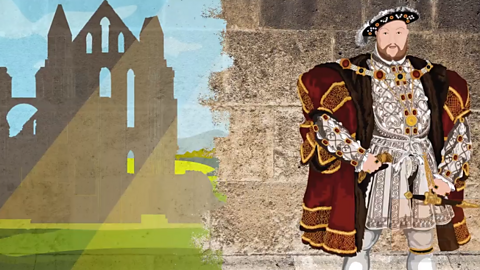
- count2 of 5
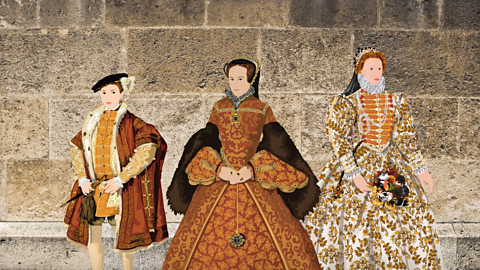
- count3 of 5
